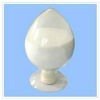- Phosphate[10]
- Food Additives[10]
- Monosodium Glutamate[1]
- Chemical Auxiliary Agent[3]
- Silica[1]
- Pigment[5]
- Carbonate[1]
- Milk Powder[1]
- Organic Intermediate[5]
- Agrochemicals & Pesticides[6]
- Pharmaceutical[7]
- Glial[1]
- Healthcare Supplement[1]
- Sulphate[1]
- Plant Extract[1]
- Starch[1]
- Contact Person : Ms. AN HAIYING
- Company Name : Lianyungang Kangke Chemical Co., Ltd.
- Tel : 0086-518-85770361,15305133903
- Fax : 0086-518-85809176
- Address : Jiangsu,LIANYUNGANG,705# NO. 1 BLD JIUHE INTERNATIONAL NEW CITY 3RD PROJECT LIANYUNGANG ECONOMIC TECHNOLOGY DEVELOPMENT ZONE, CHINA
- Country/Region : China
- Zip : 222000
Pymetrozine
Pymetrozine, insecticide, agrochemical, 123312-89-0 Good quality with competitive price
Pymetrozine, insecticide, agrochemical
Chemical name: 4,5-2H-6-methyl-4(3-pyridine-methano-amino)-1,2,4-triadiazin-3-3(2H)-one
Molecular formula: C10H11N5O
Molecular weight: 217.2
CAS no.: 123312-89-0
Physical and chemical properties:
Appearance: colorless crystals
Melting point: 217oC
Vapor pressure: <4 x 10-3mPa (25oC)
KOWlogP: -0.18
Henry: <3.0 x 10-6Pa m3 mol-1 (calc.)
S.g./density: 1.36 (20oC)
Solubility:
a) In water: 0.29g/L (pH 6.5. 25oC)
b) In ethanol 2.25, hexane <0.001 (both in g/l. 20oC)
Stability: stable in air, hydrolysis DT50 4.3 h (pH 1), 25d (pH 5)
Technical specifications:
Pymetrozine 95% tech. specification:
1) Appearance: white to slightly yellow powder
2) a.i. content: >=95%
3) Insoluble matter in acetone: <=1.0%
4) Water: <=1.0%
5) PH: 6 -9
6) Formulation types: 25%WP, 50%WDG
7) Analysis: determination by HPLC and UV detection
Applications:
1) Action: insecticide selective against Homoptera, causing them to stop feeding.
2) Uses:
a) Control of aphids and whitefly in vegetables, potatoes, ornamentals, cotton, deciduousand citrus fruit, tobacco, hops; both juvenile and adult stages are susceptible.Also for control of plant hoppers in rice.
b) Application rates vary from 150g/ha on potatoes to 200 - 300g/ha on ornamentals,tobacco and cotton; 10 - 30g/hl on vegetables, fruit and hops.
Toxicology:
1) Oral: acute oral LD50 for rats 5820mg/kg
2) Skin and eyes: acute percutaneous LD50 for rats >2000mg/kg. Non-irritatingto the skin and eyes (rabbits). Not a skin sensitiser to guinea pigs.
3) Inhalation: LC50 (4h) >1800mg/m3 air
4) NOEL: (2y) for rats 3.7mg/kg b.w. daily
5) ADI: 0.03mg/kg b.w.
6) Other: non-mutagenic in 5 assay tests, including the Ames test
7) Birds: acute oral LD50 for bobwhite quails, mallard ducks >2000mg/kg.LC50 for bobwhite quails (8d) >5200ppm
8) Fish: LC50 (96h) for rainbow trout and common carp >100mg/L
9) Daphnia: LC50 (48h) 87mg/L
10) Algae: LC50 (72h) for Scenedesmus subspicatus 47.1; LC50(5d) for Selenastrum capricornutum 21.7mg/L
11) Bees: oral LD50 (48h) >117 (Lig/bee; contact LD50 (48h)>200ig/bee
12) Worms: LC50 (14d) for Eisenia foetlda 1098mg/kg soil
Packaging: 1kg/bag, 25kg/drum
Pymetrozine






